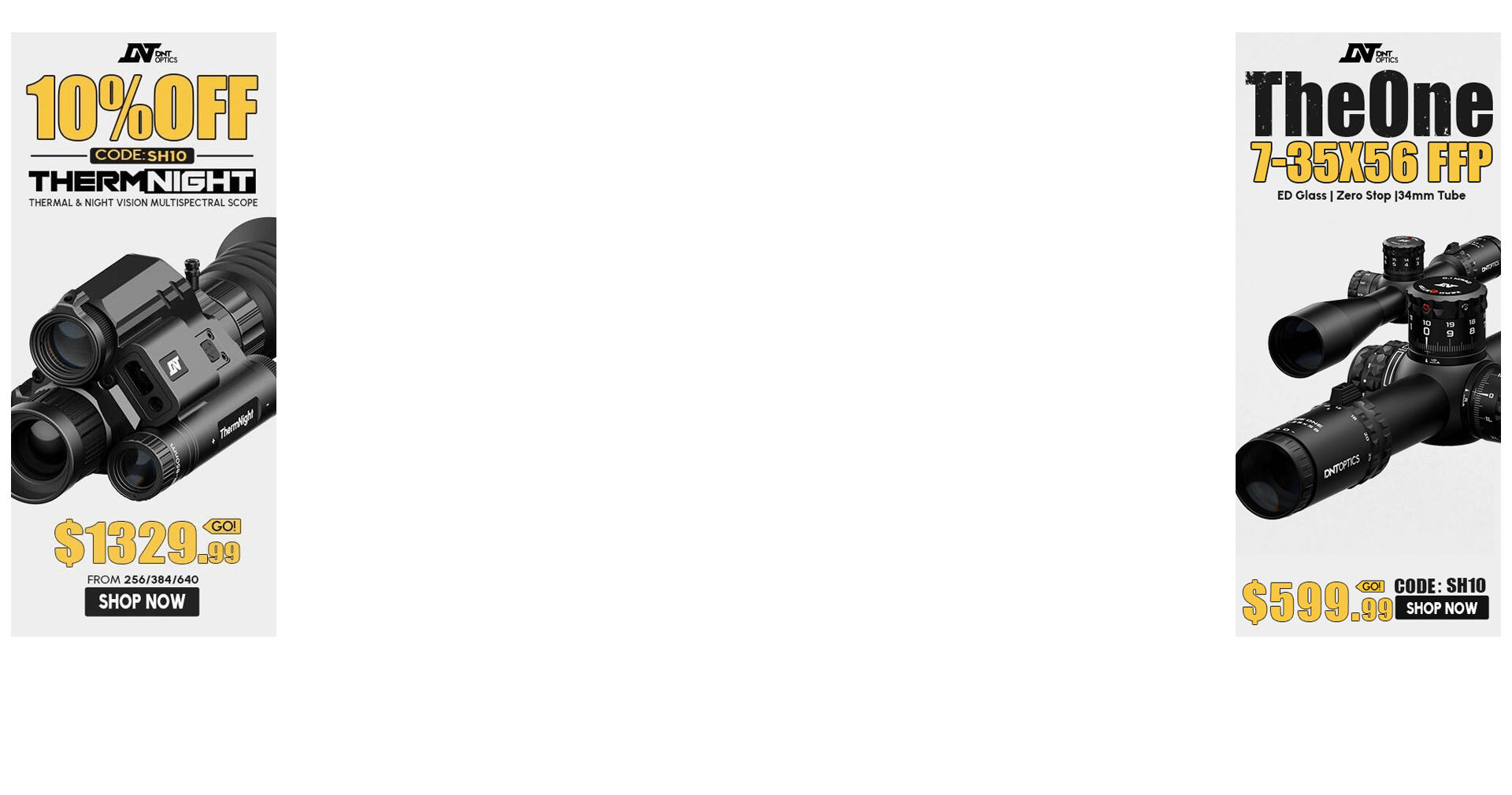FWIW.....Once you mount your scope, it's worth shooting up a tall, narrow, straight target with a target at the bottom, and dialing up your elevation to see if you track up the line or off to L or R. Tall target testing works super good enough for me to remove that potential error variable when i don't hit my target. 
Join the Hide community
Get access to live stream, lessons, the post exchange, and chat with other snipers.
Register
Download Gravity Ballistics
Get help to accurately calculate and scope your sniper rifle using real shooting data.

Install the app
How to install the app on iOS
Follow along with the video below to see how to install our site as a web app on your home screen.
Note: This feature may not be available in some browsers.
-
Get 25% Off Access To Frank's Online Training
Use code FRIDAY25 and SATURDAY25 to get 25% off access to Frank’s online training. Want a better deal? Subscribe to get 50% off.
Get Access Subscribe
You are using an out of date browser. It may not display this or other websites correctly.
You should upgrade or use an alternative browser.
You should upgrade or use an alternative browser.
Leveling a scope is dumb
- Thread starter chillywig
- Start date
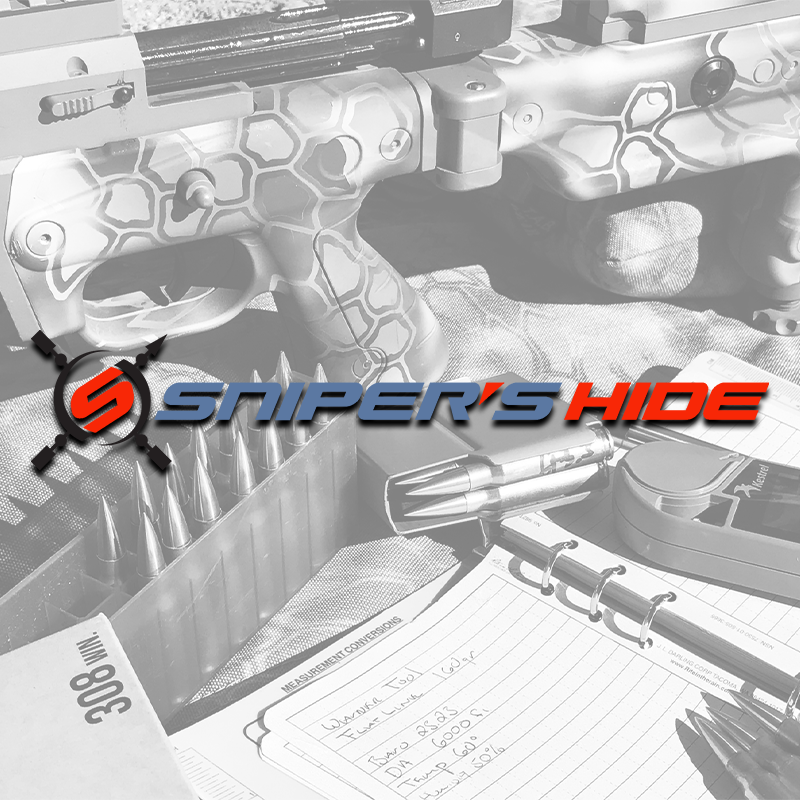
FORTUNATE IS HE WHOSE BUBBLE LEVELS ARE IN HARMONY WITH EACH OTHER
- Sun Tzu, at the signing of the Declaration of Independence, 1776
We all have our own little rituals.
Please allow me to shamelessly pimp my old thread
Mmmkay. But this being the internet and all, that validates jack shit.
are you a place holder in PRS? Are you in Ko2m? Something? No? I have to assume you lob rounds at a target, giggle about it and go home. That doesn’t not set the accuracy standard.
And it doesn’t change the fact that the scope cap is not always square with the reticle when giving general advice.
No I don't shoot PRS, I am not gay
What you are saying is that it is 100% IMPOSSIBLE to use the Wheeler system to properly level a scope then?
This is a yes or no question, don't go on and on with a bunch of non-sense.
No, but body mechanics being what they are, the vertical butt of a rifle stock doesn’t necessarily play well with the contours of a shoulder pocket (even in the prone, modified prone, seated behind a bench, off a tripod, whatever). This is why stocks often have butt plates that can be adjusted up/down/left/right and angled some amount left and right as well. Grab your rifle and get behind it. Close your eyes and address the rifle. Pull it in as though you are going to shoot it. No cheating. Keep your eyes closed. Ok, once you’ve built your position, open your eyes. Is your reticle level? Is your bubble level? If your rifle is fit to you, it should be. Many, especially those with no adjustment (or only a cheek height adjustment) will be canted due to the shape of the shooter’s shoulder pocket.So, all these people talking about how the want the scope level “when shouldering” a frakin’ 23 lbs (or more) rifle.
And, when you’ve got 10 targets at varying distances across 100 degrees of terrain, and 90 seconds to hit them all, the bubble level takes a back seat to body mechanics.
This pic?If the reticle and the turret don't align then the scope needs rebuilt and corrected.
The mistake is thinking the outside of the turret is perfectly aligned with the actual erector mechanism and the scope body.
This is why all the levels are nonsense.
Plumb line, dial through range. As long as the reticle follows the line you should be perfect. Shoot a tall target to verify.
An overwhelming amount of scopes that "don't track" are perfectly fine, they're just not perfectly square to the body. Which in reality doesn't matter a bit if the reticle and turrets track together.
It didn't help that most levels are trash. Somewhere here there's a picture floating around of 4 of those Wheeler levels all reading different on the same rail.
You sound like the biggest faggot on the hide. You sound so gay that you had to announce your closetedness when nobody fucking asked.No I don't shoot PRS, I am not gay
What you are saying is that it is 100% IMPOSSIBLE to use the Wheeler system to properly level a scope then?
This is a yes or no question, don't go on and on with a bunch of non-sense.
That’s how gay you are. But besides your homo erratic tendencies that you want to bread crumb for everyone, it sounds like you have zero credibility besides “trust me bro.” So you wasted both of our time with that.
No, what I’m saying is that it is 100% impossible that it works for everyone, every scope, or every brand, or that the level that’s made in China is accurate. Some of us want more accuracy than that. But if I had to put a number to it, I’d say more times than not, no, the scope cap is not good enough. Other people here agree as well.
All the more reason- if you are going to use a level- to use a level that mounts to the optic body and can be rotated to be true to the reticle.This pic?
View attachment 8659319
Quite the assortment on the nightstand...
R
Must smell like a french warehouse up in there.
One wonders what a French warehouse smells like. I imagine stale cigarettes and sour wine…Must smell like a french warehouse up in there.
Obviously...you never heard of the french dyslexic hooker.....One wonders what a French warehouse smells like. I imagine stale cigarettes and sour wine…
You know it's not good to shine bright light into your scope like that, right?
I did look into the scope once when I had the flashlight on. But just onceYou know it's not good to shine bright light into your scope like that, right?
No I don't shoot PRS, I am not gay
What you are saying is that it is 100% IMPOSSIBLE to use the Wheeler system to properly level a scope then?
This is a yes or no question, don't go on and on with a bunch of non-sense.
Impossible? No. Improbable... yes!
It's more cheap garbage they sell to fudds to get their duplex level to never shoot past 100 yards.
A plum bob and a tall target will always work, without relying on a gimmick.
I used a block wall that I knew square vertically and horizontally, checked it with a good 6ft level.
I'm wondering why I read this whole thing
Because you're a little winder likken goober like the rest of us, waiting for the big flash and mushroom cloud to roll over and split that extra chromosome God gave you
Jeez, people have been fine for a century or more. Whatever gets you off.
Yeah, but people also used to dress and act like the sex they were born
Dropped rifles, rotten mackerel, and commies, but that's just a guess.One wonders what a French warehouse smells like. I imagine stale cigarettes and sour wine…
Maybe your eyes are crooked.Now I have fancy gizmos like the send it level and bubbles in rings and still struggling
DudeSo, all these people talking about how the want the scope level “when shouldering” a frakin’ 23 lbs (or more) rifle.
I’m not talking about your 10 lbs hunting rig SS I know some of the folks advocating this shoot heavy PRS type rifles.
Are you by really shooting off hand (which also means across the body$ with those rifles because if not I wonder why you are worried about cant from your shoulder pocket.
If I shot off hand a lot, I’d put an adjustable butt pad on it and kick the pad’s toe out so rifle and scope are level
I believe NRA high power guys do that.
You shoulder the rifle when in the prone position. The comments have nothing to do with shooting offhand.
Your alignment to the rifle when in the prone position can impart a natural cant which can be negated by aligning the reticle to plumb when you are in position.
Last edited:
Id imagine it smells like "aspiring Frenchmen" from wonderful French colonies like Central AfricaOne wonders what a French warehouse smells like. I imagine stale cigarettes and sour wine…
Fresh baked bread maybeOne wonders what a French warehouse smells like. I imagine stale cigarettes and sour wine…
Well said, I don't know why this is so hard to understandDude
You shoulder the rifle when in the prone position. The comments have nothing to do with shooting offhand.
Your alignment to the rifle when in the prone position can impart a natural cant which can be negated by aligning the reticle to plumb when you are in position.
Improbable, lolImpossible? No. Improbable... yes!
It's more cheap garbage they sell to fudds to get their duplex level to never shoot past 100 yards.
A plum bob and a tall target will always work, without relying on a gimmick.
Sorry this just goes against everything I have seen in real life. I have a good friend I shoot with that also uses the Wheeler to setup all his scopes and he has no problems either. He has setup 6 guns this way, each gun has had multiple scopes. My sample size is not as large.
This is why I am asking if it is just impossible or are we just lucky, or maybe its something else entirely. Apparently I am completely wrong in what I experience per the pit
Now you all are going to make me pull the plumb line thing back out and double check, here I thought I had found an easier way. Good news is the setup is easy to double check.
How does he certify Wheeler’s spirit levels?Improbable, lol
Sorry this just goes against everything I have seen in real life. I have a good friend I shoot with that also uses the Wheeler to setup all his scopes and he has no problems either. He has setup 6 guns this way, each gun has had multiple scopes. My sample size is not as large.
This is why I am asking if it is just impossible or are we just lucky, or maybe its something else entirely. Apparently I am completely wrong in what I experience per the pit
Now you all are going to make me pull the plumb line thing back out and double check, here I thought I had found an easier way. Good news is the setup is easy to double check.
How far does he shoot? What are his reasonable accuracy expectations?
Thank youWell said, I don't know why this is so hard to understand
Did it for almost a week with every level in my garage ....perfect ....put in on my kitchen table and looked outside.....canted ....loosened scope clamp rings and turned scope ....perfect . A week i will never get back but a learning all the same , woodworker tools [levels] vary GREATLY but machinists tool did not .
How does he certify Wheeler’s spirit levels?
How far does he shoot? What are his reasonable accuracy expectations?
I don't know
and
I have seen him hit 4 out of 5 shots at a 6" steel at 1000 yards, with 5 shots total taken
I was able to hit 1 out of 5 with 5 shots total, my misses were not ridiculously off or not all were in the same spot high left or anything like that (my issue was wind)
I could understand that not being 'good enough' for professionals on this site. That is however good enough for me personally, so the wheeler seems to work for me, I can see where it might not work for others, the question is how accurate is good enough to accept the wheeler levelled scope?
The point is, if you have 5 different Wheeler kits, you’re going to end up with 5 different results.I don't know
and
I have seen him hit 4 out of 5 shots at a 6" steel at 1000 yards, with 5 shots total taken
I was able to hit 1 out of 5 with 5 shots total, my misses were not ridiculously off or not all were in the same spot high left or anything like that (my issue was wind)
I could understand that not being 'good enough' for professionals on this site. That is however good enough for me personally, so the wheeler seems to work for me, I can see where it might not work for others, the question is how accurate is good enough to accept the wheeler levelled scope?
Yes Nik….dude….I’ve shot right next to you and your butt pad, my butt pad, and every other swinging dick’s butt pad in those clinics were not well outboard and in your shoulder pocket.Dude
You shoulder the rifle when in the prone position. The comments have nothing to do with shooting offhand.
Your alignment to the rifle when in the prone position can impart a natural cant which can be negated by aligning the reticle to plumb when you are in position.
You know as well as I do that, and let’s stick with prone, that you set the NPA of the rifle AND you get down on the gun with the same NPA. Your butt pad is straight in line with the rest of your body and is as close to being under your on eye as you can get which…again…ain’t in your shoulder pocket unless you have eye stalks like a crab or you roll your head completely to the side to try to get your eye behind the scope…and you know that’s not something we do.
If it ain’t in your shoulder pocket…which slants down and out and is well outside the width off your head on most human beings…then there is no reason to cant the pad in order to straighten up the rifle.
And dude…I know what the topic of this thread is. You aren’t the only one who can read, ya know.
I bring up off hand shooting because then there is a reason to cant the pad in that case because you are in your shoulder pocket with the rifle angled across your body.
Now I don’t compete and therefore don’t shoot barricades and the like so perhaps there are situations where you would have the pad in your shoulder pocket but even then I don’t see how you get your eye into the scope. Now I’ve watched vids of PRS shooting and it sure seems that the shooters work to position themselves so the rifle is straight out from their body and…wait for it…not in their shoulder pocket.
And, there may be physical restrictions that make it more comfortable to shoot with a little rifle cant and compensate by rotating the scope a bit to get it level. But it’s not from being in the shoulder pocket.
Great attitude…dude.
Last edited:
Don't the 3p guys cant the rifle to bring the weight of the barrel closer to their spine? I think thats one example where the rifle isn't really setup level from the get-go.
With PRS style rifles, I'm not really a fan of setting them up out of level.
Reason being that canted rifle almost by definition is out of balance in relation to gravity. And having a PRS rifle be out of balance in relation to gravity is generally the one thing you don't want to do.
It means you would then constantly be fighting the rifle on props.
If you need to cant the but-pad or the cheek rest etc that doesn't really count because those parts are very light weight.
The 3p guys are canting the barrel which can be like 4-5lbs. But that isn't out of balance, because essentially they are tri-angulating the mass with their bone support, in a way which is much different to how we are shooting precision rifles, using a 1p or 2p rest most of the time.
With PRS style rifles, I'm not really a fan of setting them up out of level.
Reason being that canted rifle almost by definition is out of balance in relation to gravity. And having a PRS rifle be out of balance in relation to gravity is generally the one thing you don't want to do.
It means you would then constantly be fighting the rifle on props.
If you need to cant the but-pad or the cheek rest etc that doesn't really count because those parts are very light weight.
The 3p guys are canting the barrel which can be like 4-5lbs. But that isn't out of balance, because essentially they are tri-angulating the mass with their bone support, in a way which is much different to how we are shooting precision rifles, using a 1p or 2p rest most of the time.
Last edited:
A bit sharp, almost sulphurous, with a side of putrid rot and a dash of stale pit.Id imagine it smells like "aspiring Frenchmen" from wonderful French colonies like Central Africa, Chad
, Congo
, etc. Based on my experience in that area of the world, it would be a rarher crisp scent you'd never forget. I might completely wrong.
My son is 9 weeks old, and I enjoy telling people I assigned his gender as male. If they want to create unnecessary buttons, I will push them.Yeah, but people also used to dress and act like the sex they were born
My wife is a younger foreign lady, so I tell people I wanted someone I could impress and control. I also tell them I bought her from her family. This isn't really true. I stiffed them.
So was not familiar with the wheeler system so I googled it. How are you getting the barrel clamp level square to the rifle?

This, or don't even bother shooting past 600.


 www.starrett.com
www.starrett.com

199Z Master Precision Level with SLC
The Master Precision Level provides the ability to ensure a level machine setup, which in turn increases the efficiency of modern, high speed machinery.
Use this to level the scope with your rifle.
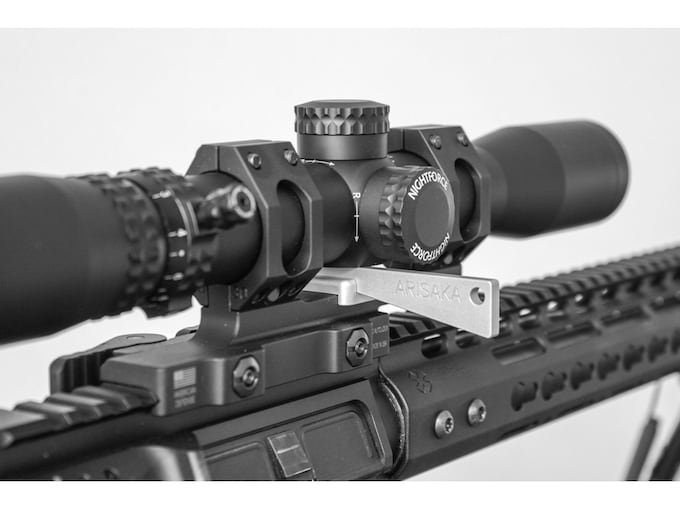
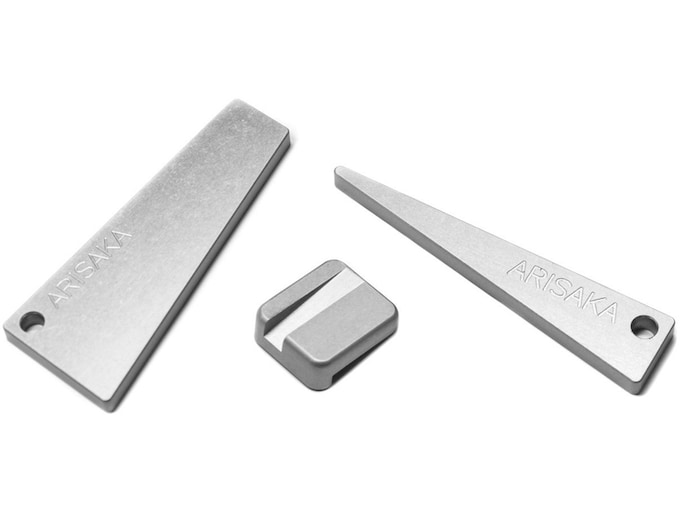
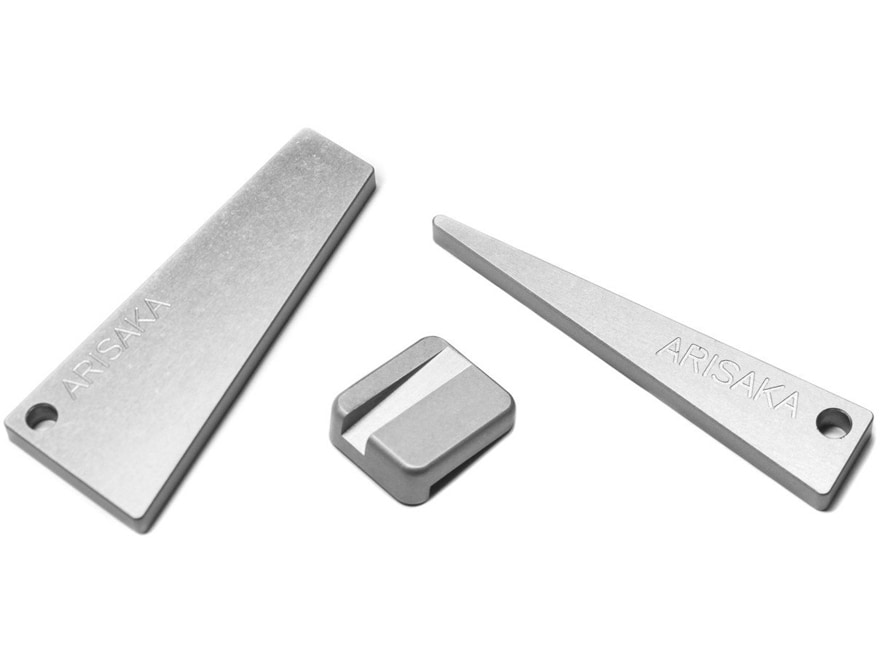
 www.midwayusa.com
www.midwayusa.com
Then when the scope if mechanically squared with the rifle like the above photo you can put a level on it like then one below. Then suspend a plum-bob downrange with brightly colored mason line.
Align the crosshairs with the string holding the plumb-bob while adjusting and securing the scope level.




Arisaka Defense Scope Leveler Combo
The Arisaka Optic Leveler is an inexpensive, easy-to-use tool for leveling scopes mounted in rings or one-piece mounts. The base plate sits on the...
Then when the scope if mechanically squared with the rifle like the above photo you can put a level on it like then one below. Then suspend a plum-bob downrange with brightly colored mason line.
Align the crosshairs with the string holding the plumb-bob while adjusting and securing the scope level.

I guess I am asking for flames, but since I don't really care, here goes.
I am far from an expert marksman, but I took like 500 semesters of math and physics, and even though I have forgotten most of it, basic trig is not a big challenge for me. I have to say that I am not sure about the whole leveling business, according to my understanding, which could well be wrong.
Okay, so you're shooting a round that drops 10 feet at x yards, but your scope is canted away from the direction of gravity by one degree. So you think "down" is 10° from where it really is. Unless I'm missing something, that means your horizontal error, assuming everything else works perfectly, is 10 feet sin(1°). Before you tell me 10 feet isn't the hypotenuse, let me just say you should think twice.
So the horizontal deviation or error or whatever is about 2", always in the same direction. For 5°, it's about 10". I think a 5° cant would be pretty obvious to anyone who isn't tanked up, but it would be good to hear from someone who actually knows from experience, which isn't me.
Is any of this wrong yet? I can't see any obvious problems.
So for 6.5 Skinny Jeans at 1000, I get 5" at 1°, assuming a 285" drop. For 3°, I get about 15". So leveling must matter somewhat once you get far enough out for the round you're shooting. Is that right?
But assuming you get your scope level to your rifle to within a fraction of a degree, isn't it going to be a royal pain getting the center of the reticle and the axis of the bore in line, precisely, with the direction of gravity? I mean, if your scope and rifle are aligned, but your bipod is off, you're still off.
Also, it seems to me that aligning your scope with gravity is better than aligning it with the bore. It seems like the maximum error you could get from being canted with respect to the gun would be the horizontal distance from the bore's axis to the scope's axis, because it won't open up downrange. Is that wrong? But if your scope is canted with respect to gravity, you can be a lot farther off.
I've used machinists' parallels to set scopes level with rails, but don't ask me whether the rails were aligned with the receivers or whether the reticles were aligned with the bottom surfaces of the scopes, which I used as reference surfaces.
Seems to me that if you really want to do things as well as possible, you need to align your scope with your gun as well as you can, once, and align the scope with gravity every time you put your gun on a rest. Then shoot to see how far off things are in practice, and rotate your scope to match the error.
I am far from an expert marksman, but I took like 500 semesters of math and physics, and even though I have forgotten most of it, basic trig is not a big challenge for me. I have to say that I am not sure about the whole leveling business, according to my understanding, which could well be wrong.
Okay, so you're shooting a round that drops 10 feet at x yards, but your scope is canted away from the direction of gravity by one degree. So you think "down" is 10° from where it really is. Unless I'm missing something, that means your horizontal error, assuming everything else works perfectly, is 10 feet sin(1°). Before you tell me 10 feet isn't the hypotenuse, let me just say you should think twice.
So the horizontal deviation or error or whatever is about 2", always in the same direction. For 5°, it's about 10". I think a 5° cant would be pretty obvious to anyone who isn't tanked up, but it would be good to hear from someone who actually knows from experience, which isn't me.
Is any of this wrong yet? I can't see any obvious problems.
So for 6.5 Skinny Jeans at 1000, I get 5" at 1°, assuming a 285" drop. For 3°, I get about 15". So leveling must matter somewhat once you get far enough out for the round you're shooting. Is that right?
But assuming you get your scope level to your rifle to within a fraction of a degree, isn't it going to be a royal pain getting the center of the reticle and the axis of the bore in line, precisely, with the direction of gravity? I mean, if your scope and rifle are aligned, but your bipod is off, you're still off.
Also, it seems to me that aligning your scope with gravity is better than aligning it with the bore. It seems like the maximum error you could get from being canted with respect to the gun would be the horizontal distance from the bore's axis to the scope's axis, because it won't open up downrange. Is that wrong? But if your scope is canted with respect to gravity, you can be a lot farther off.
I've used machinists' parallels to set scopes level with rails, but don't ask me whether the rails were aligned with the receivers or whether the reticles were aligned with the bottom surfaces of the scopes, which I used as reference surfaces.
Seems to me that if you really want to do things as well as possible, you need to align your scope with your gun as well as you can, once, and align the scope with gravity every time you put your gun on a rest. Then shoot to see how far off things are in practice, and rotate your scope to match the error.
I guess I am asking for flames, but since I don't really care, here goes.
I am far from an expert marksman, but I took like 500 semesters of math and physics, and even though I have forgotten most of it, basic trig is not a big challenge for me. I have to say that I am not sure about the whole leveling business, according to my understanding, which could well be wrong.
Okay, so you're shooting a round that drops 10 feet at x yards, but your scope is canted away from the direction of gravity by one degree. So you think "down" is 10° from where it really is. Unless I'm missing something, that means your horizontal error, assuming everything else works perfectly, is 10 feet sin(1°). Before you tell me 10 feet isn't the hypotenuse, let me just say you should think twice.
So the horizontal deviation or error or whatever is about 2", always in the same direction. For 5°, it's about 10". I think a 5° cant would be pretty obvious to anyone who isn't tanked up, but it would be good to hear from someone who actually knows from experience, which isn't me.
Is any of this wrong yet? I can't see any obvious problems.
So for 6.5 Skinny Jeans at 1000, I get 5" at 1°, assuming a 285" drop. For 3°, I get about 15". So leveling must matter somewhat once you get far enough out for the round you're shooting. Is that right?
But assuming you get your scope level to your rifle to within a fraction of a degree, isn't it going to be a royal pain getting the center of the reticle and the axis of the bore in line, precisely, with the direction of gravity? I mean, if your scope and rifle are aligned, but your bipod is off, you're still off.
Also, it seems to me that aligning your scope with gravity is better than aligning it with the bore. It seems like the maximum error you could get from being canted with respect to the gun would be the horizontal distance from the bore's axis to the scope's axis, because it won't open up downrange. Is that wrong? But if your scope is canted with respect to gravity, you can be a lot farther off.
I've used machinists' parallels to set scopes level with rails, but don't ask me whether the rails were aligned with the receivers or whether the reticles were aligned with the bottom surfaces of the scopes, which I used as reference surfaces.
Seems to me that if you really want to do things as well as possible, you need to align your scope with your gun as well as you can, once, and align the scope with gravity every time you put your gun on a rest. Then shoot to see how far off things are in practice, and rotate your scope to match the error.
Psst!
It’s just a ritual!
And some kind of reassurance to ourselves that we have done everything we could to keep our rifles happy, kinda like obsessively waxing our cars
Everyone is built differently. I always have a natural cant, so I do it my way. It works.Yes Nik….dude….I’ve shot right next to you and your butt pad, my butt pad, and every other swinging dick’s butt pad in those clinics were not well outboard and in your shoulder pocket.
You know as well as I do that, and let’s stick with prone, that you set the NPA of the rifle AND you get down on the gun with the same NPA. Your butt pad is straight in line with the rest of your body and is as close to being under your on eye as you can get which…again…ain’t in your shoulder pocket unless you have eye stalks like a crab or you roll your head completely to the side to try to get your eye behind the scope…and you know that’s not something we do.
If it ain’t in your shoulder pocket…which slants down and out and is well outside the width off your head on most human beings…then there is no reason to cant the pad in order to straighten up the rifle.
And dude…I know what the topic of this thread is. You aren’t the only one who can read, ya know.
I bring up off hand shooting because then there is a reason to cant the pad in that case because you are in your shoulder pocket with the rifle angled across your body.
Now I don’t compete and therefore don’t shoot barricades and the like so perhaps there are situations where you would have the pad in your shoulder pocket but even then I don’t see how you get your eye into the scope. Now I’ve watched vids of PRS shooting and it sure seems that the shooters work to position themselves so the rifle is straight out from their body and…wait for it…not in their shoulder pocket.
And, there may be physical restrictions that make it more comfortable to shoot with a little rifle cant and compensate by roaring the scope a bit to get it level. But it’s not from being in the shoulder pocket.
Great attitude…dude.I’m out.
My point is that leveling the scope when the rifle isn't in its natural position is not the end.
You brought up shooting offhand, not me. I was merely responding to that. Sorry, that ruffled your feathers.
Well that just ruins everything!Psst!
It’s just a ritual!
And some kind of reassurance to ourselves that we have done everything we could to keep our rifles happy, kinda like obsessively waxing our cars
To get back to rituals, I saw some guy saying to align the vertical crosshair of the scope to a plumb bob, but he didn't say how to make sure you hold the rifle level while you're shooting it. Personally, I can't look at a level AND a reticle at the same time. I wonder if anyone has managed to place a vertical reference inside a reticle.
Okay, I figured it out. Stick an accelerometer from a phone in the scope and display the degree of cant inside the reticle. Now I just need to patent it and keep the Chinese from stealing it.
I don't get the plumb bob thing. Unless your house was built by crackheads, there ought to be dozens of vertical lines in it to align stuff to without hanging things from strings. I certainly HOPE my window frames aren't a degree out of perpendicular.
Never owned a scope level.
Always installed my own optics by eyeballing.
Always seem to be on target...whether its 22 precision at 250yds or 30-06 at a mile.
So i am fucking good or lucky, according to the "experts".
Ive seen folks get obsessed about it. Hey...if it feels good...do it.
Unless you are hydrocephalic.....your brain and eye will pretty naturally line shit up straight pretty fucking close.
Always installed my own optics by eyeballing.
Always seem to be on target...whether its 22 precision at 250yds or 30-06 at a mile.
So i am fucking good or lucky, according to the "experts".
Ive seen folks get obsessed about it. Hey...if it feels good...do it.
Unless you are hydrocephalic.....your brain and eye will pretty naturally line shit up straight pretty fucking close.
Small plug for Stabila levels.
Pricey, but they’re the real deal.
I’m sure others will attest.
Pricey, but they’re the real deal.
I’m sure others will attest.
Pretty sure I would have been flamed for saying that.
I am old.
Cranky.
And likelyvdone a fair bit more competitive shooting than over half the people on this site.
Let them flame me. I do not give a shit.
At those ranges you are almost a one man mortar crew lolNever owned a scope level.
Always installed my own optics by eyeballing.
Always seem to be on target...whether its 22 precision at 250yds or 30-06 at a mile.
So i am fucking good or lucky, according to the "experts".
Ive seen folks get obsessed about it. Hey...if it feels good...do it.
Unless you are hydrocephalic.....your brain and eye will pretty naturally line shit up straight pretty fucking close.
Here is how I feel. If there is one guy here who shoots really well at long distance, and others attest that he is not full of it, and he has numerous guns without super-level scopes, then I will forget all about obsessive leveling. I don't want to waste any more time working on guns than I already do.
Similar threads
- Replies
- 14
- Views
- 1K
- Replies
- 1
- Views
- 218
- Replies
- 29
- Views
- 3K
